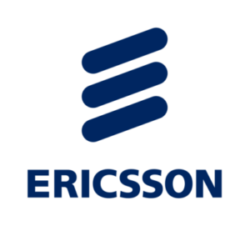Global telecom equipment manufacturer Ericsson (NASDAQ: ERIC) reported mixed results for its 1Q23 performance. Worldwide sales for the quarter reached $6.1 billion, up 14 percent over $5.3 billion in 1Q22. However, profitability, expressed as earnings before interest, taxes and amortization (EBITA), excluding restructuring charges, was down 36 percent year-over-year to $295 million.
Sales by region were varied. The company’s results reflect the anticipated capex slowdown in North America, its largest global market, which declined 18 percent YoY. Cutbacks in orders in North East Asia, mainly from MNOs in China, resulted in a 20 percent YoY drop. Sales in Europe and Latin America collectively declined 7 percent from the year-ago quarter, mainly due to macroeconomic uncertainties. Those declines were offset by a surge in sales in South East Asia, Oceania and India region that jumped 138 percent YoY to $1.3 billion as MNOs in the region ramped up 5G with major deployments in India and achieving project milestones in the Philippines and Malaysia.
Mobile Networks, Ericsson’s largest product and services segment, accounted for 68 percent of sales, and grew 4 percent YoY to $4.1 billion. Networks sales grew in South East Asia, Oceania and India while it declined in the other four market areas. Cloud Software and Services sales were up 11 percent to $1.3 billion in 1Q23 with sales growth in three of the five market areas. Cloud Software and Services accounted for 21 percent of total sales. Enterprise sales, though just 10 percent of the total, grew 275 percent YoY to $582 million driven by Enterprise Wireless Solutions in a number of markets.
The company maintained a high level of research and development investment. R&D in the quarter was $1.2 billion, a 12 percent YoY increase. R&D was 19 percent of sales, proportionally consistent with 1Q22.
“We continue to see a choppy environment during 2023 with poor visibility,” comments Börje Ekholm, Ericsson President and CEO. “In Q2, we expect [mobile network] operators to remain cautious with capex investments and continue to adjust inventories.”
Ekholm expects revenue growth in new network rollouts in several markets to be dilutive to gross margins in the short term, but sees the Enterprise segment with a long-term growth trajectory. He cautions the slower growth experienced in Q1, caused by the slower global economy, will continue in Q2.
“For Q2, we expect Group EBITA margin to reach mid-single-digit level. We expect a gradual recovery in the second half of 2023, primarily as we expect the inventory adjustments to be completed and our cost reduction activities to start flowing through the P&L,” Ekholm says. The company believes it is on track to reach the lower end of the long term EBITA target range of 15-18 percent by 2024.
Long-term, Ekholm maintains a positive outlook. “Previous experience tells us that when operators are seeing underlying traffic growth, this leads to investments in networks in order to avoid deteriorating quality,” he says. “Our strategy is paying off and we are excited about our position to capitalize on the full value of 5G. We are driving our transformation to a platform company with a focus on creating a stronger and more profitable Ericsson with a larger addressable market.”
By John Celentano, Inside Towers Business Editor





Reader Interactions